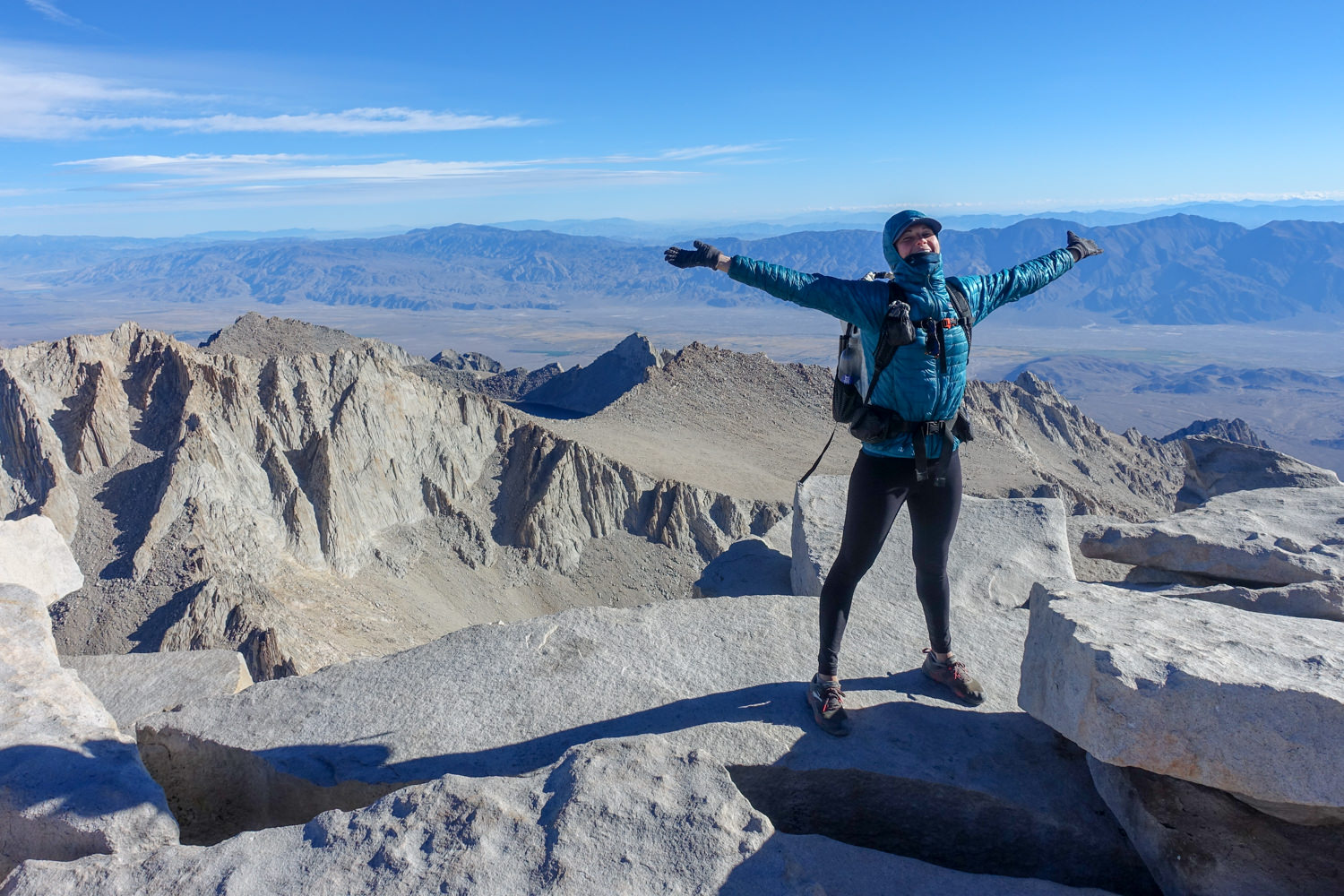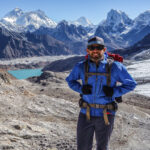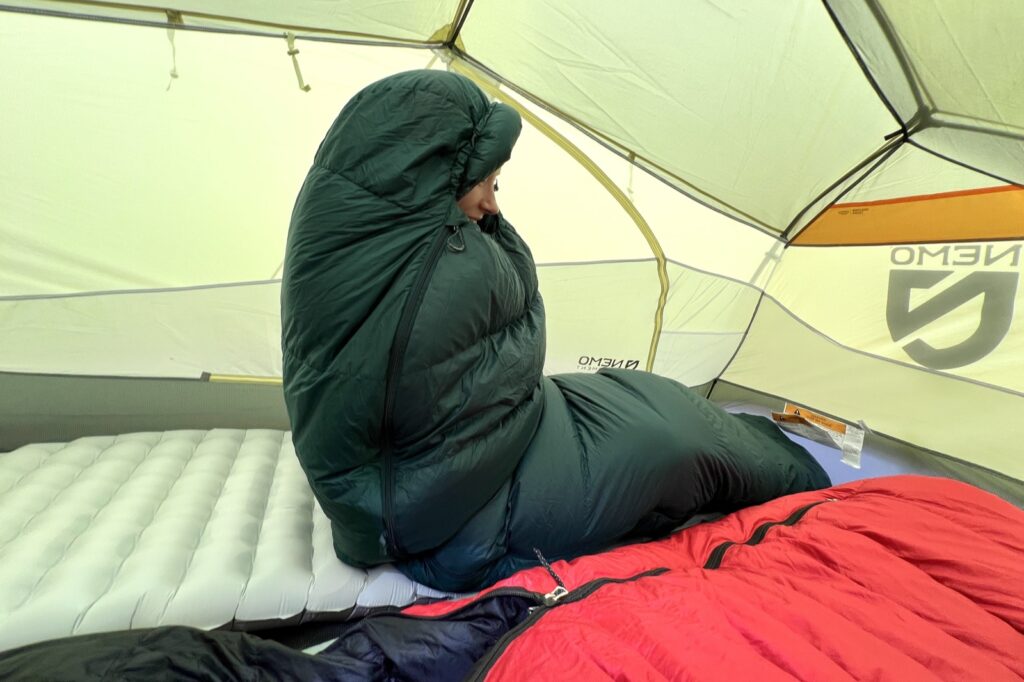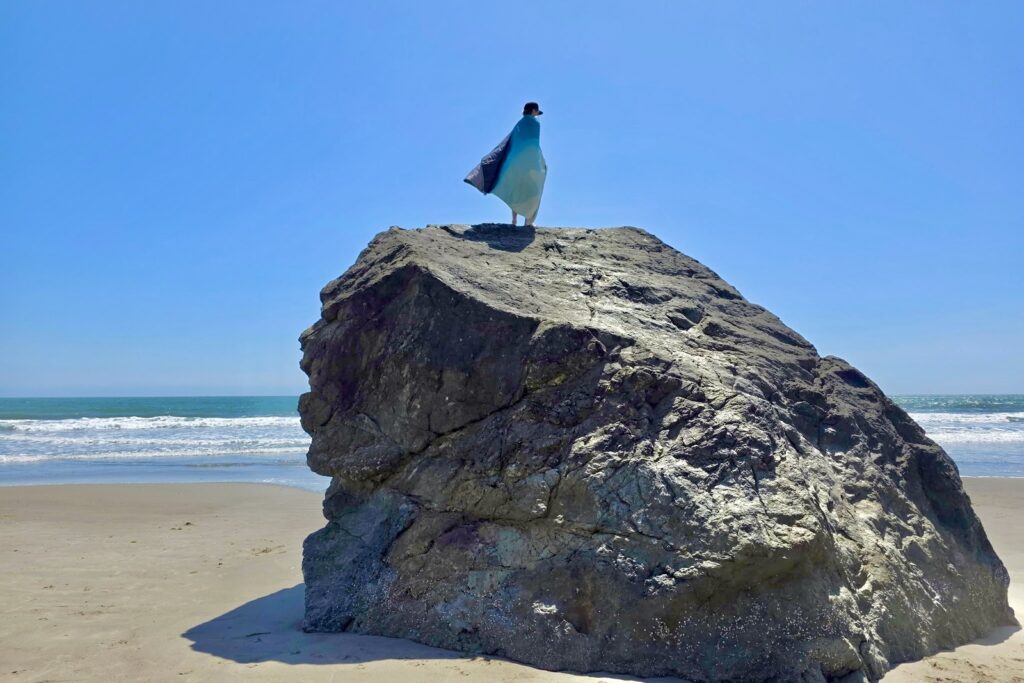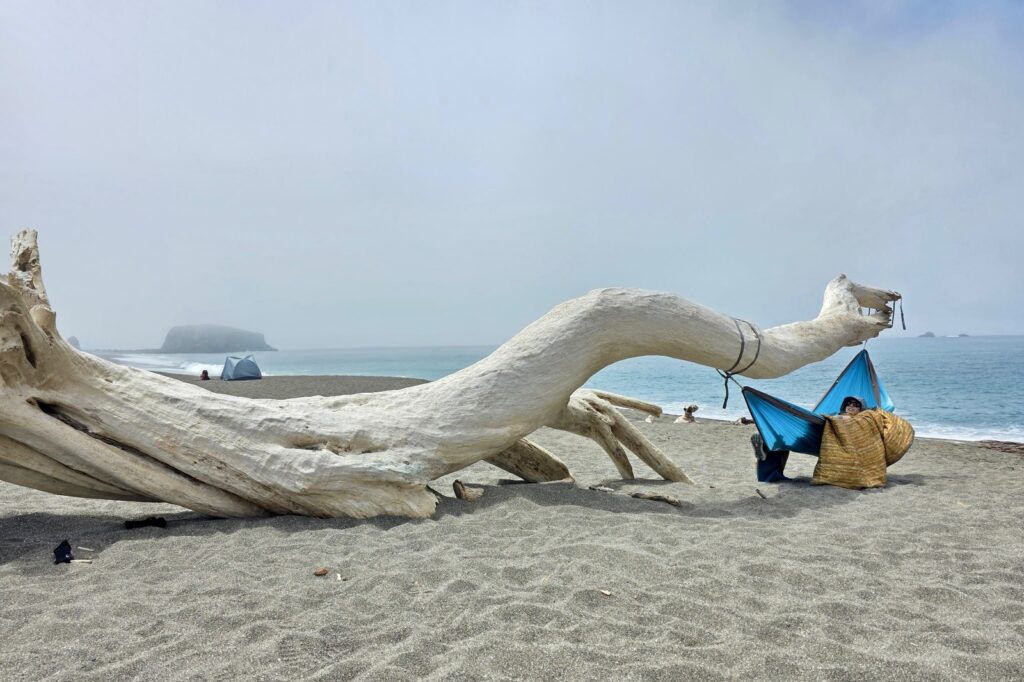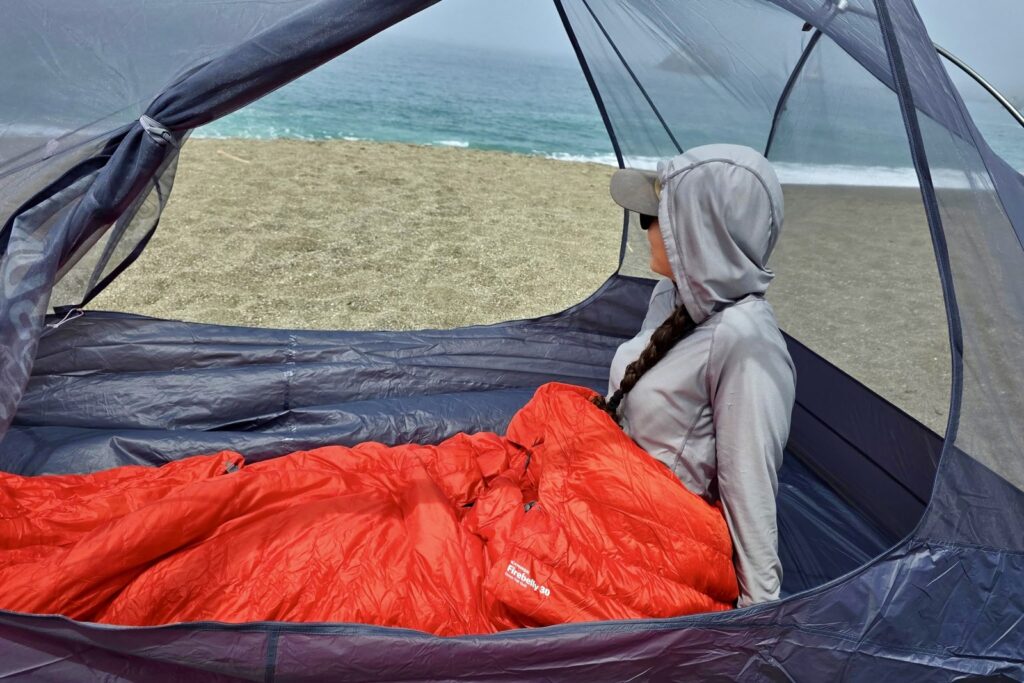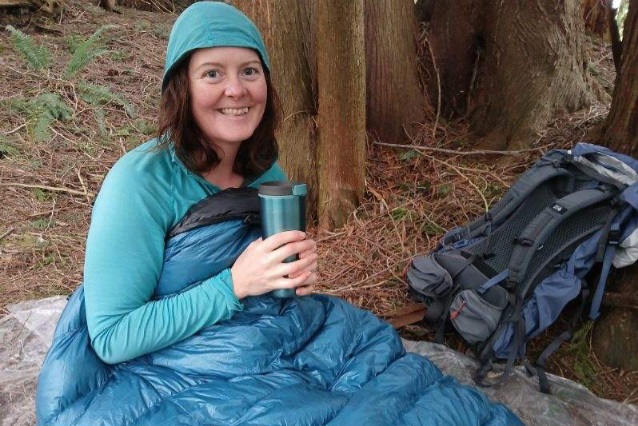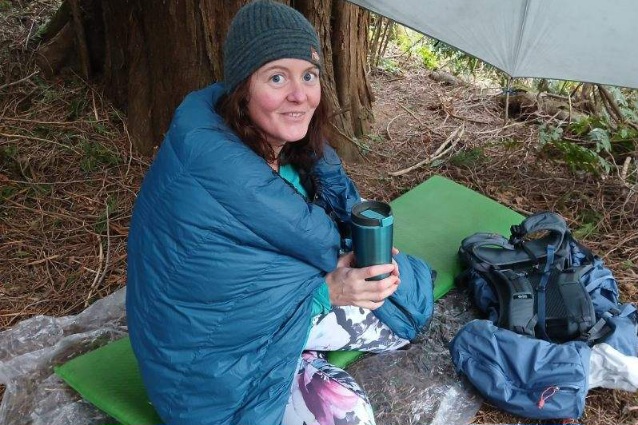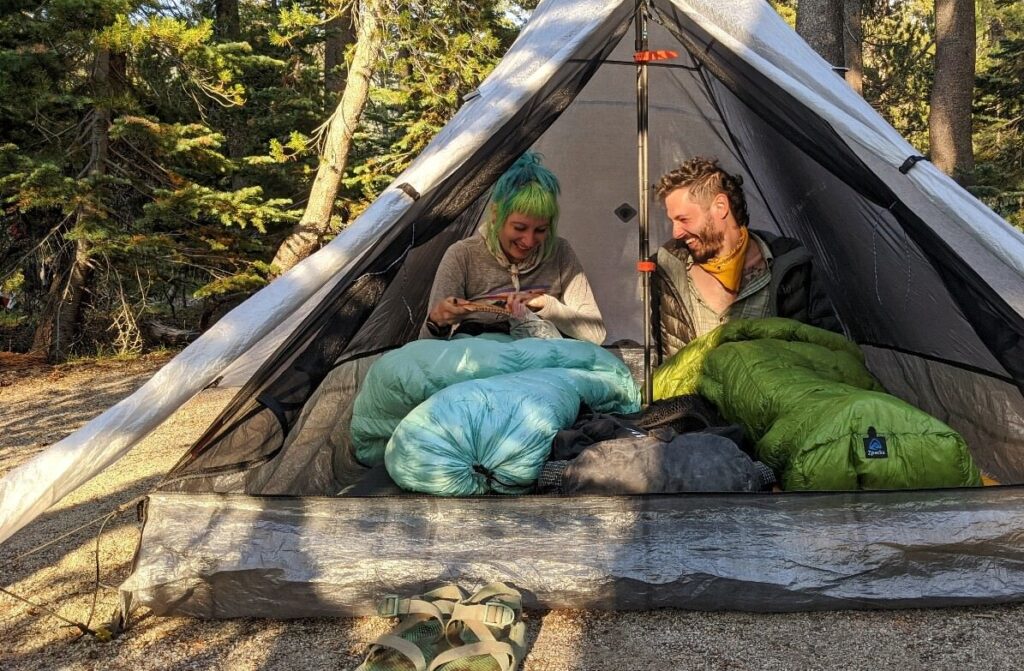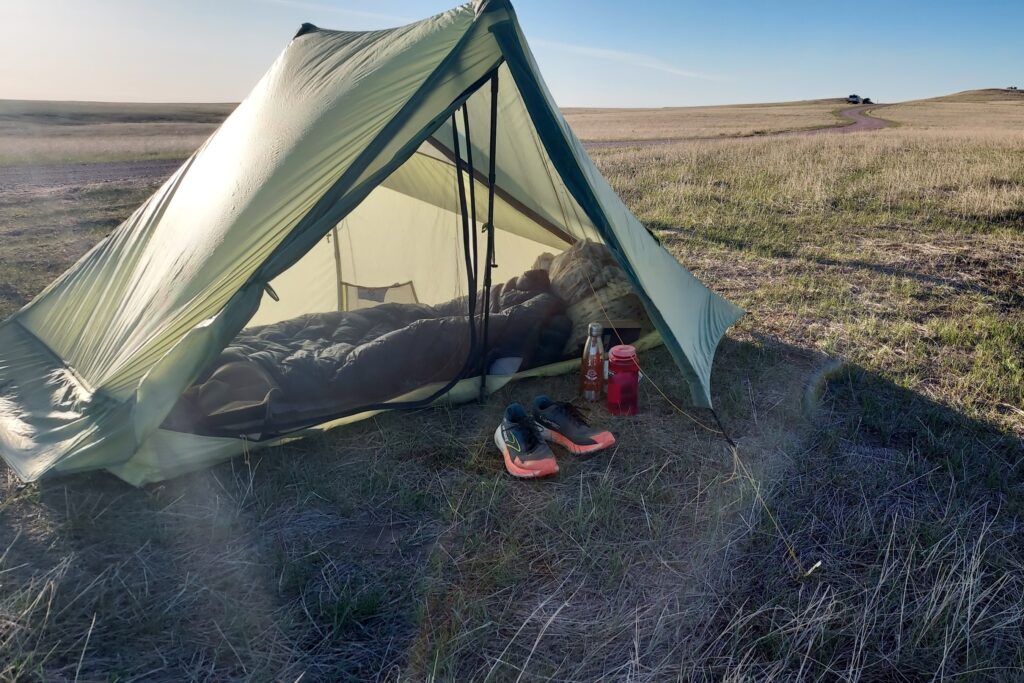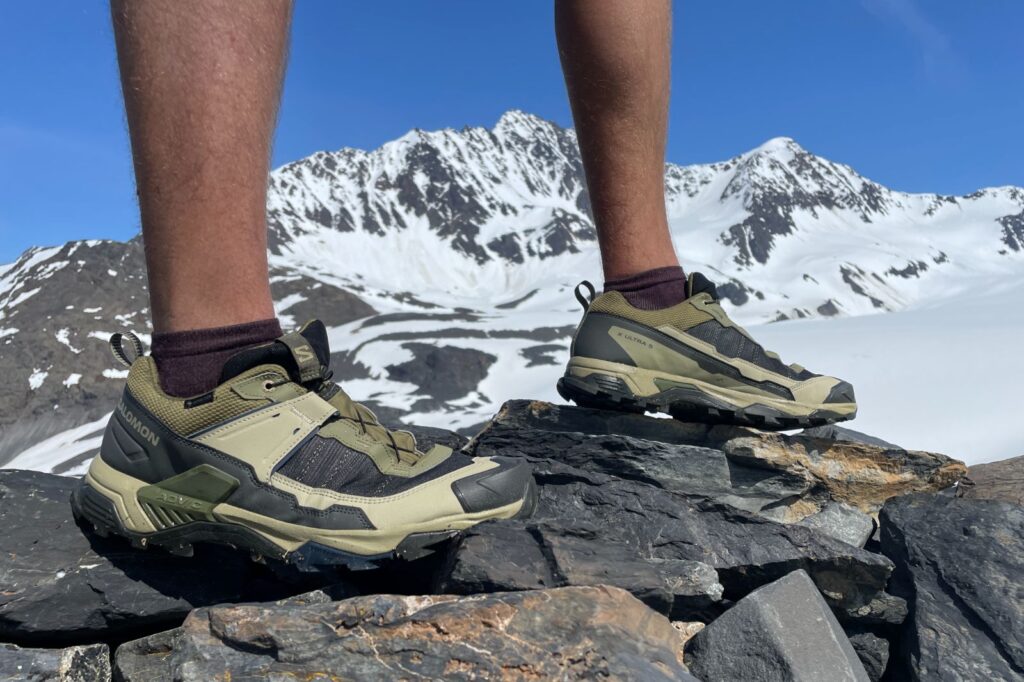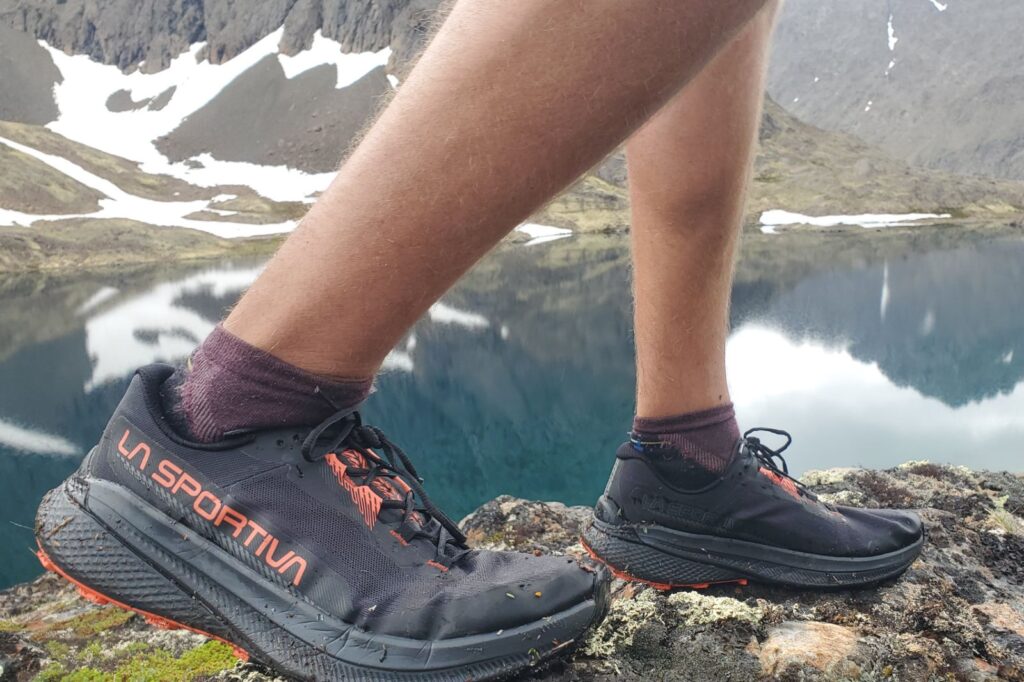
The John Muir Trail (JMT) is widely considered one of the most spectacular stretches of trail in the world. It traverses the High Sierras of California for 210 miles over mountain passes and through pristine wilderness dotted with alpine lakes. It offers both an immense challenge and equal reward like few other trails. Of all the trails we’ve hiked, the JMT is one of our all-time favorites.
The permit process is daunting and in any given hiking season, the odds of obtaining one are long. However, we truly believe the JMT should be on every hiker’s bucket list.
One of the most important considerations for thru-hiking the JMT is determining what gear to bring. We recommend channeling your inner thru-hiker, digging into our lightweight backpacking videos, and really dialing in your gear well before your hike (don’t worry, we’ve put together a handy guide for exactly that purpose). Your goal should be to pack as light as possible while still remaining safe and comfortable.
For more comprehensive information on planning and logistics, check out our Complete Guide to Hiking the John Muir Trail.
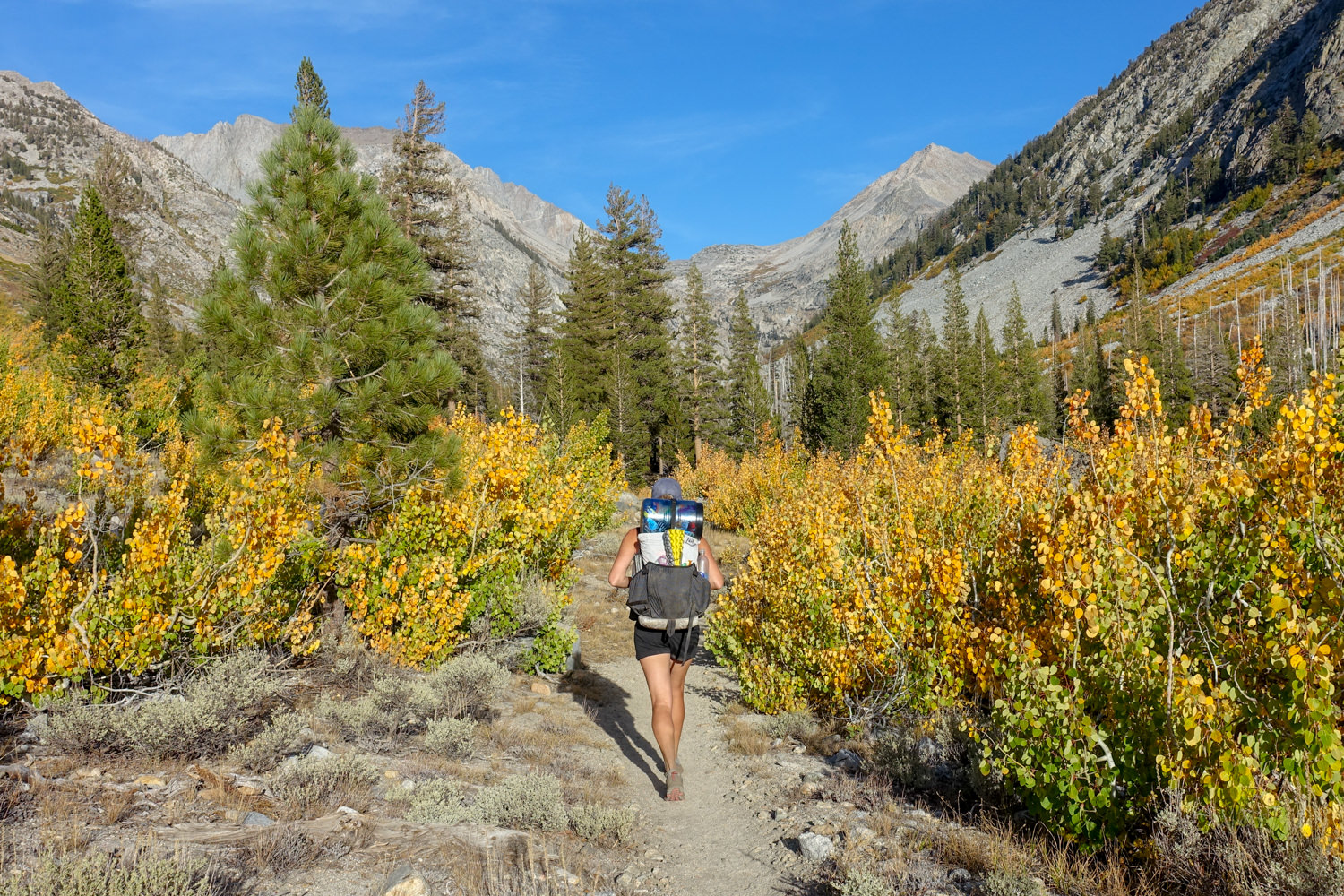
Why Hike Light?
The John Muir Trail is jaw-droppingly beautiful, but also incredibly challenging. Most days you’ll hike 2,000 feet or more up one side of a mountain pass and then 2,000 feet down the other side. Then rinse and repeat. For this reason, we really can’t stress enough how important it is to keep your pack weight to a safe minimum. We try to keep our base weight (everything in your pack minus any consumables like food and water) at no more than 15 pounds, so our total pack weight is never above 25-30 pounds.
Dialing in your gear can be expensive, time-consuming, and feel overwhelming, but we promise it’s well worth it. Refining your kit will make your 2-3 weeks on the JMT far more enjoyable, and you’ll be much more likely to make it to the finish.
If you’re not quite sold, here are some of the main benefits of hiking light:
- The ability to hike long distances comfortably. This allows you to take fewer breaks and cover many more miles in a day.
- Light packs allow you to hike with your head up, see more of the sights, breathe fully, and spend less time hunched over staring at your feet.
- You’ll also feel far more nimble and coordinated on the trail, avoiding stumbles and walking at a brisk pace.
- A lighter pack allows you to wear lightweight footwear, which will also save a ton of energy, help you avoid blisters, and feel far more comfortable.
- Light packs make big climbs and descents much, much easier.
- A lightweight pack will put less stress on knees and joints, which will help you avoid injury.
- And importantly, backpacking with a lightweight pack will help improve overall mood and morale, so you’ll have more fun. Which is really what it’s all about.
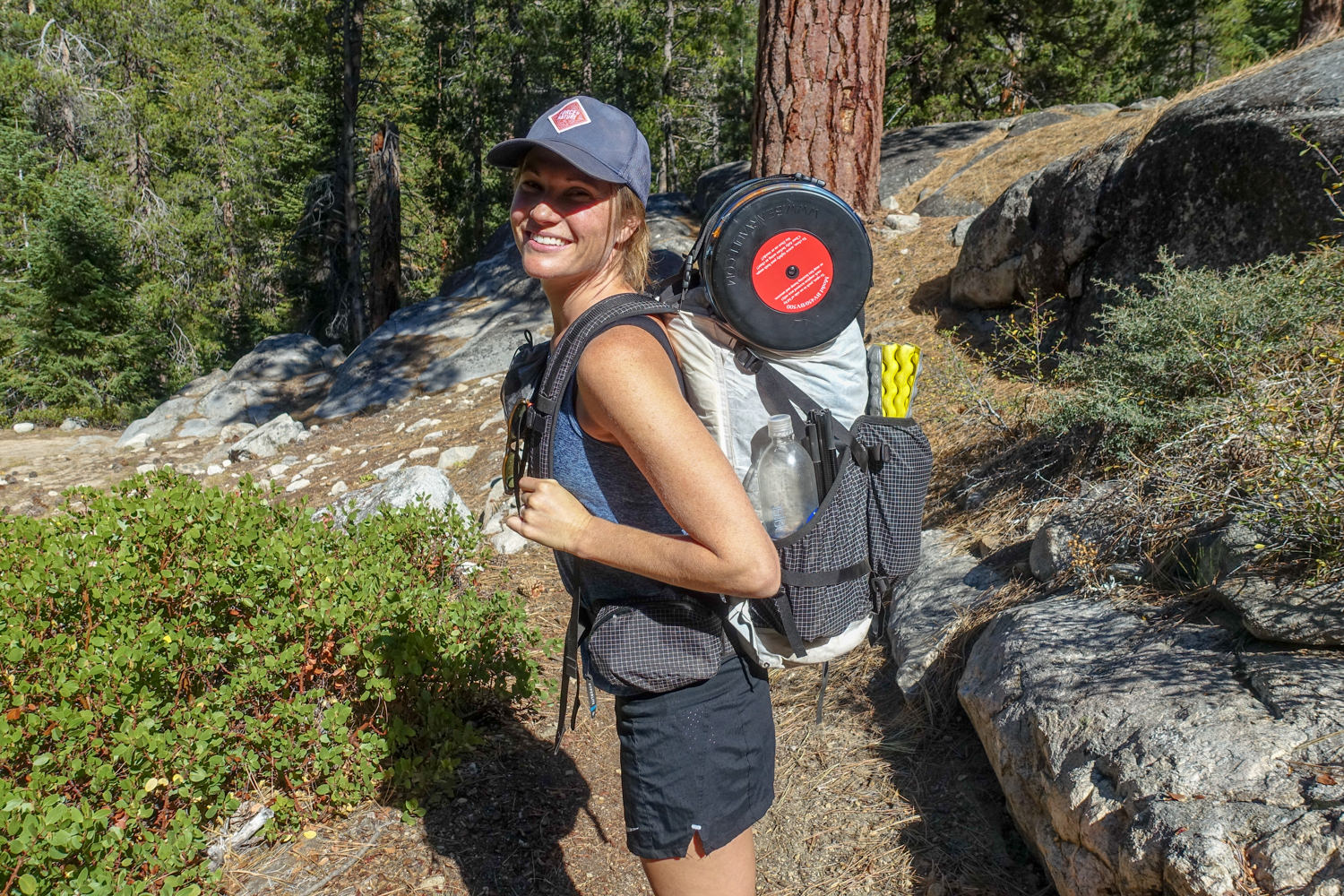
What Gear Should I Pack?
Tent
Your tent will be one of the four heaviest items in your backpack, so it should be one of the first places you look to keep weight down.
Non-freestanding
Long-distance thru-hikers often choose ultralight non-freestanding single-wall shelters to keep tent weight to a minimum. Their main advantage over a traditional tent is that they can be far, far lighter (sometimes by multiple pounds). This could be a good choice for the JMT. The disadvantages are that they often take longer to set up, accumulate more interior condensation, and can be tricky to pitch on hard ground/rock.
FREESTANDING
If you prefer nighttime comfort over daytime weight savings, you may find that a freestanding double-wall tent is a better fit. Just make sure to get a lightweight/ultralight model (with a packed weight around 3 pounds or less, assuming you are sharing with another person), because some freestanding tents can be very heavy. For the more casual backpacker, this tends to be the most popular choice. A lightweight freestanding tent will be fairly foolproof and can be used for backpacking, car camping, and everything in-between.
SEMI-FREESTANDING
For those who like a solid compromise, semi-freestanding (typically double-wall) tents are usually lighter than freestanding models but also less temperamental than non-freestanding shelters. They achieve this by using fewer pole segments, instead requiring (usually two) stakes at the foot for a complete pitch, reducing overall weight. At the same time, they retain a main tent that is separate from the rainfly, so they still have some of the creature comforts like interior pockets, vestibules, and decent ventilation.
Tent Recommendations
The Zpacks Duplex and Triplex are our top picks for non-freestanding ultralight tents. They are definitely top-of-the-line thru-hiking shelters, but they’re also pretty expensive. If you’re looking for a freestanding tent, our top pick is the Big Agnes Copper Spur UL2 & UL3. We love the convenience and comfort of the Copper Spur, and this line is among the lightest freestanding tents on the market.
As far as what size to choose, we generally prefer 3-person ultralight tent models and use them as a roomy tent for two people (the Triplex or UL3 for example). Though 3-person models weigh a bit more, they provide proportionally way more space. If you’re traveling solo or don’t mind tight living quarters, you’ll likely want a 1P or 2P tent (like the Duplex or UL2).
Though these are two of the best backpacking tents on the market, there are many other tent options for hiking the JMT. Check out our Best Backpacking Tents list and Best Ultralight Tents list if you want to shop around some more.
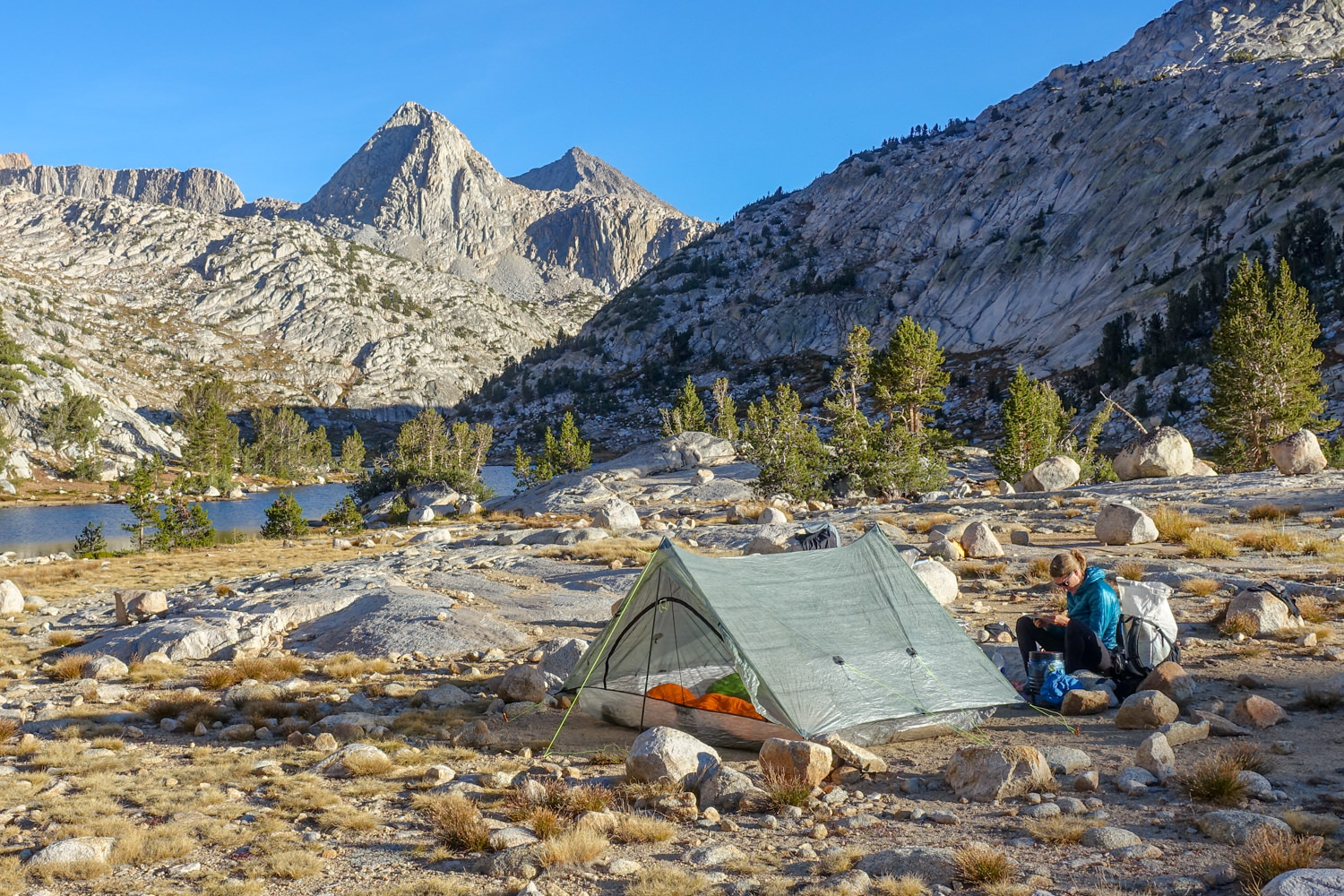
Sleeping Bag
Most of the John Muir Trail is at high elevation (8,000-13,000 feet), so nighttime temperatures can dip fairly low, even during summer months. If you’re hiking in spring or fall, there is a high likelihood of encountering below-freezing nighttime temps. At the same time, your sleeping bag will be one of the heaviest and bulkiest items in your pack. For this reason, it’s really important to find a good balance between weight and warmth.
Temperature rating
It’s also important to remember that the temperature rating listed on most sleeping bags and quilts is almost always closer to the low end of the bag’s tolerance rather than a comfortable sweet spot. For example, a sleeping bag with a 20 at the end of its name will keep you alive at 20°F, but you won’t be sleeping like a baby. Be sure to look at the comfort rating instead – it’s about 10° higher than the lower limit rating. So, a 20°F sleeping bag should keep you comfortable to right around freezing (32°F) or a little below.
Quilts
Backpacking quilts are a good option because they have an excellent warmth-to-weight ratio, but they also tend to be draftier because they don’t have an sewn underside and instead rely on straps that clip around your sleeping pad in order to close them up. In addition, we’ve found that most quilts are even less realistic in their temperature ratings, so we add an extra 20° (yes, 20!) when we calculate comfort ratings for quilts. For example, we expect a 10°F quilt to keep us comfortable to right around freezing (32°F) or a little below.
Recommendations
For most backpackers, we think 20°F sleeping bags and 10°F quilts are the best fit for hiking the JMT during peak season. In hot summer weather you may want to bump up 10°, or in frigid early spring / late fall you may want to bump down 10°, but in general those are good baselines.
top recommendations for JMT sleeping bags:
- Western Mountaineering AlpinLite 20
- REI Magma 15
- Feathered Friends Egret UL 20 (women’s)
- Enlightened Equipment Revelation 10 quilt
- Check out our Best Sleeping Bags and Best Backpacking Quilts lists for more recommendations
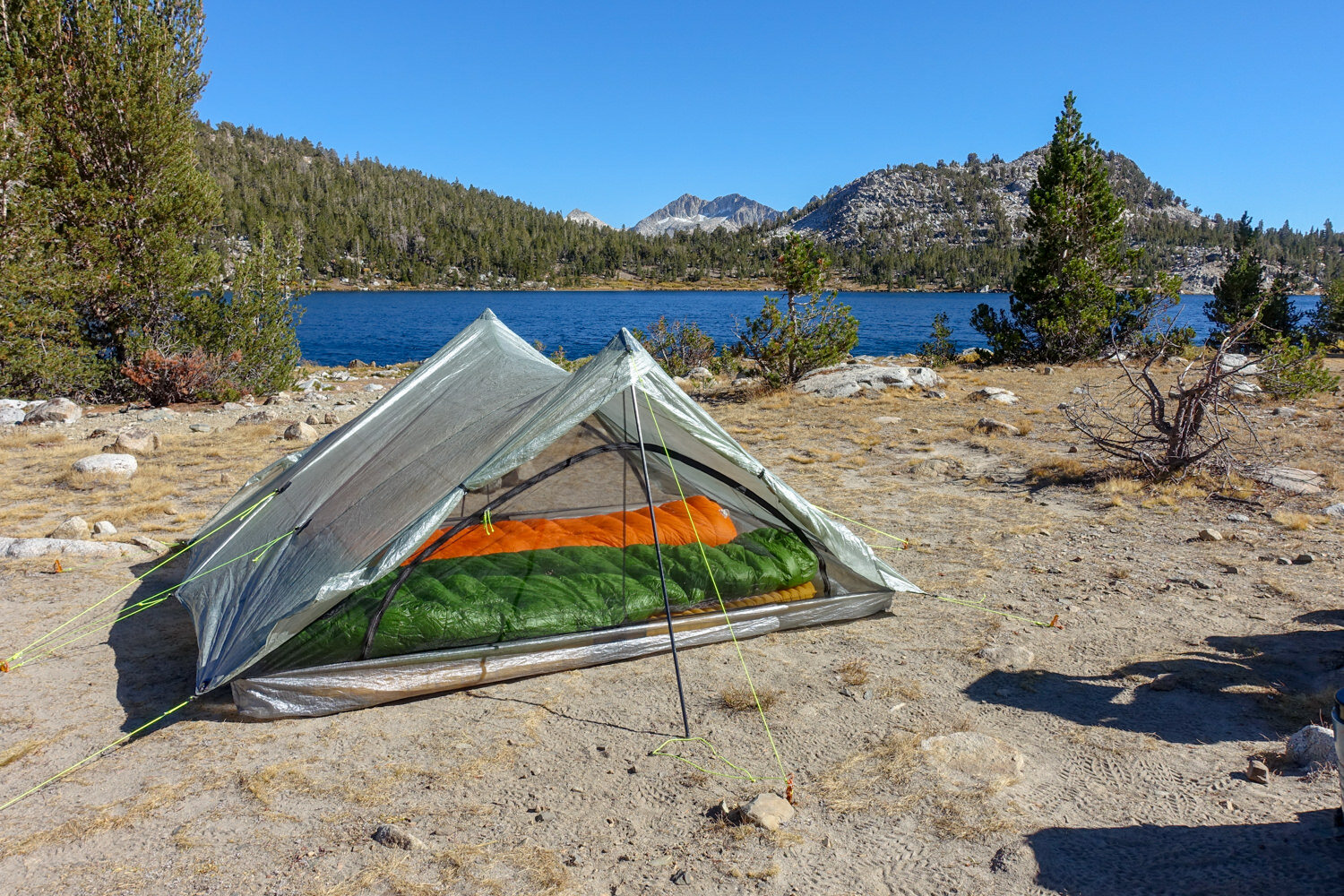
Sleeping Pad
Your sleeping pad is another key area to consider when trying to keep weight and bulk to a minimum. With chilly nighttime temperatures in the Sierras, you’ll also want to ensure you’re insulated from the cold ground. We recommend choosing an insulated sleeping pad with an R-value (warmth rating) of 3 or higher.
Our top pick among backpacking sleeping pads is the Therm-a-Rest NeoAir XLite NXT, which offers exceptional warmth and comfort for its weight. If you’re a cold sleeper and you’re hiking during shoulder season, you may even want a 4-season pad with an R-value of 5 or higher, like the Therm-a-Rest NeoAir XTherm. We also have a lineup of other top picks in our guide to the Best Sleeping Pads.
Backpack
Your backpack is the final item in the big four. We prefer minimal lightweight backpacks that weigh 2 pounds or less (assuming that the rest of our gear is under the recommended weight limit). There are also many solid backpacks in the 2-3 pound range for slightly heavier loads, but we wouldn’t recommend a pack over 3 pounds for the JMT if you can avoid it.
The key to going with a lightweight pack is keeping your other gear weight and bulk to a minimum. Lightweight packs have simple frames (or no frames at all) that are usually excellent up to 30 pounds. But if you load them down with much more than that, they’ll quickly become uncomfortable. Though we are emphasizing weight reduction, we do not suggest exceeding the weight limit of an ultralight pack – it really isn’t worth it.
Our top recommendations for lightweight backpacks are the Hyperlite Mountain Gear 40 & 55, Gossamer Gear Gorilla 50 or Mariposa 60, and the ZPacks Arc Blast (but only if your ultralight gear is super dialed in with a base weight of 10 pounds or less). For more of our favorites, check out our Best Backpacking Backpacks list.
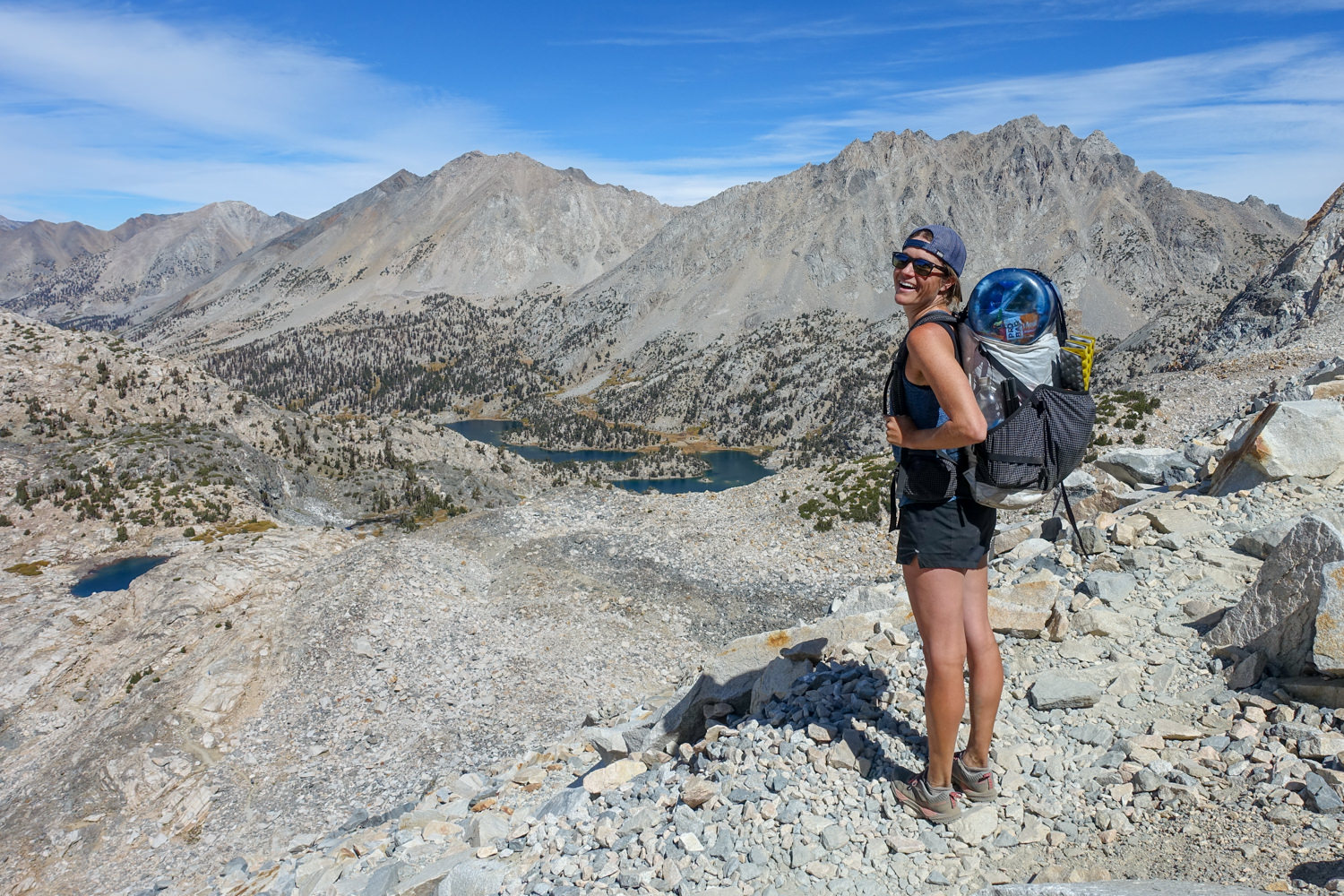
Shoes
The JMT is well-maintained and well-traveled. It’s a surprise to some, but on trails like this we almost always wear trail running shoes – check out our 5 Reasons to Ditch Your Hiking Boots. If you need the support of a high-ankle shoe or boot, there’s absolutely nothing wrong with going that route. However, for most long hikes, we prefer lighter, more breathable, quick-drying trail runners. We love the Saucony Peregrines (men’s / women’s) and Brooks Cascadias (men’s / women’s).
We’ve hiked tens of thousands of miles in trail runners on some of the most rugged terrain on the planet (Nepal, Patagonia, CDT, PCT, and dozens of other places). In our experience, the pros of trail runners heavily outweigh their cons, especially when compared to hiking in heavy boots.
That said, footwear is very person-specific, so make sure to go on plenty of training hikes and find what works best for you. If boots are the right move for you, or you plan to encounter winter snow conditions, make sure to break them in well before your trip. For more recommendations on hiking footwear, check out our Best Hiking Shoes list.
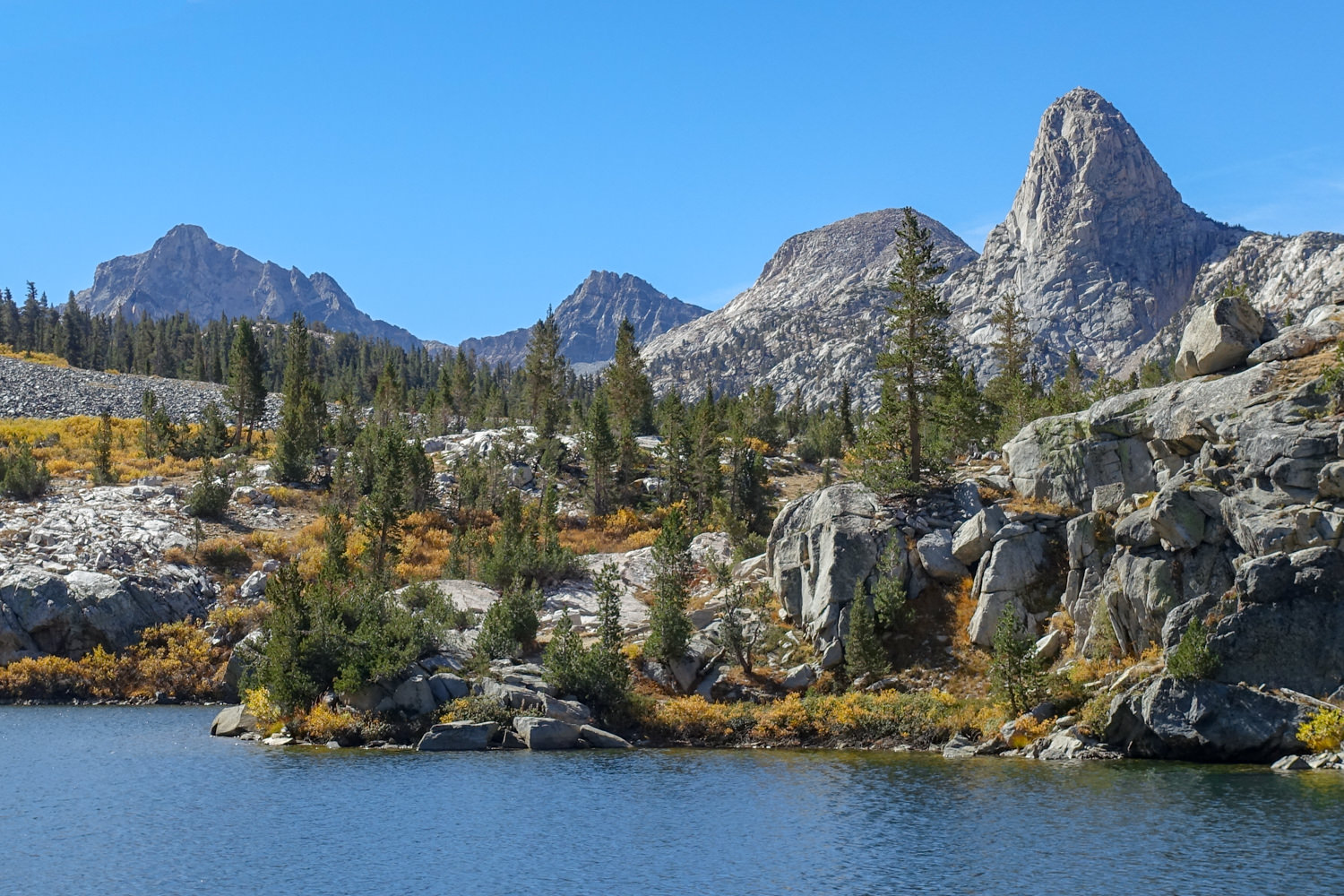
Rain Gear
Compared to most mountain ranges, hiking in the Sierras during peak season tends to be clear and dry. On one of our JMT thru-hikes in late June, it didn’t rain a single day. That said, rain gear is a critical piece of safety equipment. Protecting against hypothermia is one of your most important safety considerations.
We recommend choosing a lightweight rainshell and pairing it with a warm puffy coat (more on that below). Our current favorite raincoats are the Patagonia Torrentshell 3L (men’s / women’s) and the Outdoor Research Foray II (men’s / women’s). If you’re looking to go as minimal as possible, the Outdoor Research Helium II (men’s / women’s) is also a good option. For more of our recommendations, check out our Best Rain Jackets post.
As far as rain pants go, consider them an optional item to bring if you’re expecting very cold and wet weather. We also would sleep on using a sun umbrella as part of a rainy weather outfit. Though they falter in windy conditions above treeline, our Gossamer Gear Lightrek has kept us drier in extended rain and hail than any rain jacket ever has. No joke.
Puffy Coat
A lightweight and warm down jacket is a key piece of gear for any backpacking trip. Even on warm summer adventures, as soon as the sun goes down or you flip to the shady side of the mountain, you’ll want to throw on your puffy. A good backpacking puffy is lightweight, warm, and can pack down very small. Some of our favorite down jackets are the MontBell Plasma 1000 Alpine Down Parka and Mountain Hardwear Ghost Whisperer 2 (men’s / women’s). For warmer summer trips, we really love Patagonia’s synthetic Nano Puff Hoody (men’s / women’s). Nano Puff Hoody. For more recommendations, check out our Best Down Jackets post.
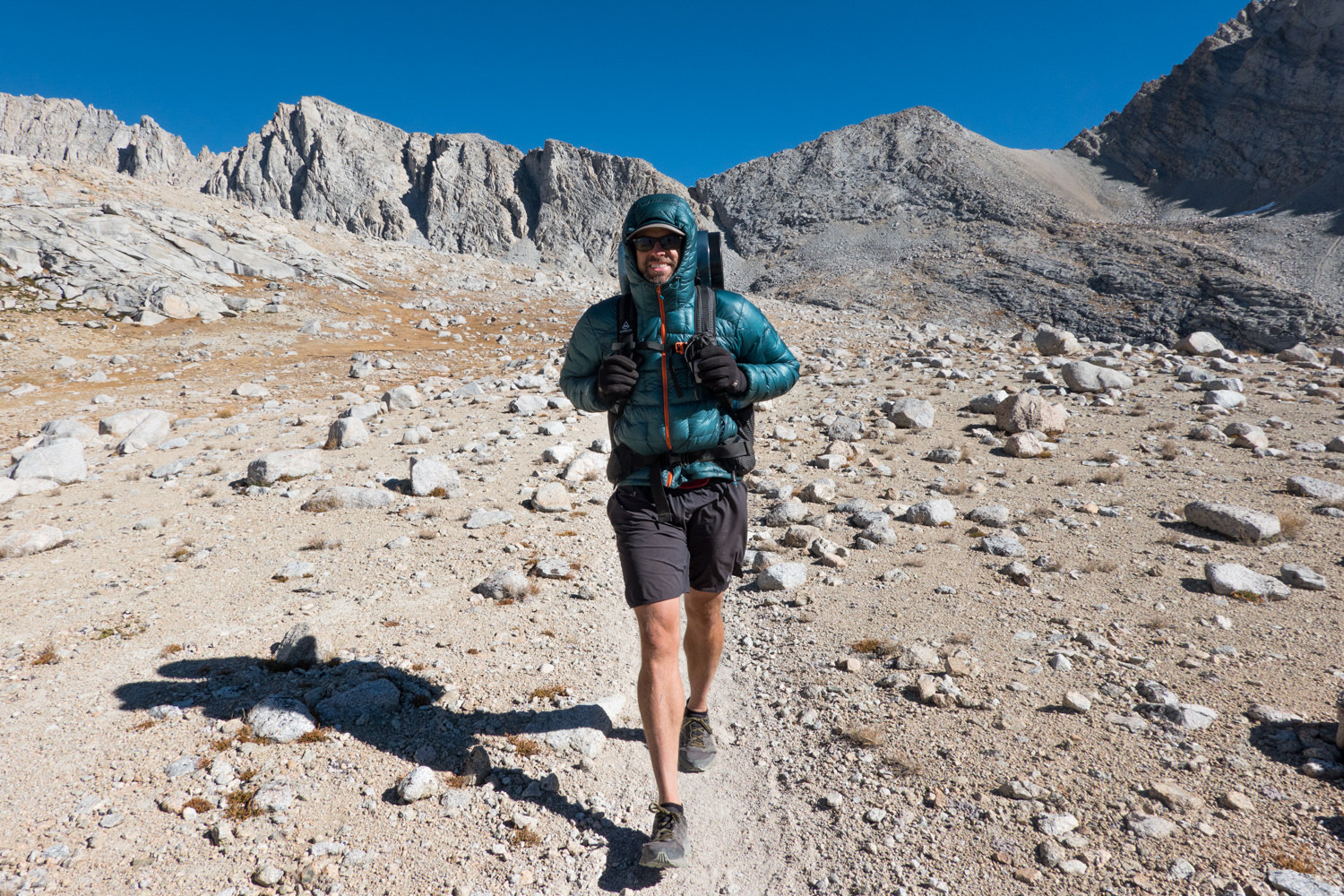
Fleece Jacket
A lightweight fleece can be very useful in a clothing layering system. On cold and wet trips, a fleece will come in handy because it will stay warm even when wet and can be used under your puffy coat and rain shell. For summer backpacking trips on the JMT, we likely wouldn’t bring a fleece jacket. But on shoulder season trips with lower temps and possibly moody weather, we definitely would. Some of our top lightweight fleece recommendations are the Patagonia R1 Air Hoodie (men’s / women’s) and Outdoor Research Deviator Hoodie (men’s / women’s).
Clothing
Packing too much clothing is a common mistake that leads to a lot of unnecessary weight on trail. Instead, pack clothes you can easily layer and avoid bringing two items that will serve the same purpose. Bring quick-dry synthetic clothing you can rinse out if need be, and try to keep some clothes clean and dry for camp. Here are some additional clothing items we love for the JMT:
- Hiking pants – Outdoor Research Ferrosi (men’s / women’s)
- Hiking leggings – Nike Dri-FIT Team One
- Hiking shorts – Nike Dri-FIT Training Shorts
- Hiking t-shirt – Nike Legend Short Sleeve
- Long-sleeve shirt – Nike Half Zip
- Underwear – ExOfficio Give-N-Go Boxer Briefs / ExOfficio Give-N-Go 2.0 Women’s Briefs
- Socks (add thin sock liners if using boots) – Balega running socks for warm weather & Darn Tough Micro Crew Cushion
- Long john bottoms – optional, for nighttime use.
- Warm hat
- Buff
- Sun hat
- Gloves / mittens
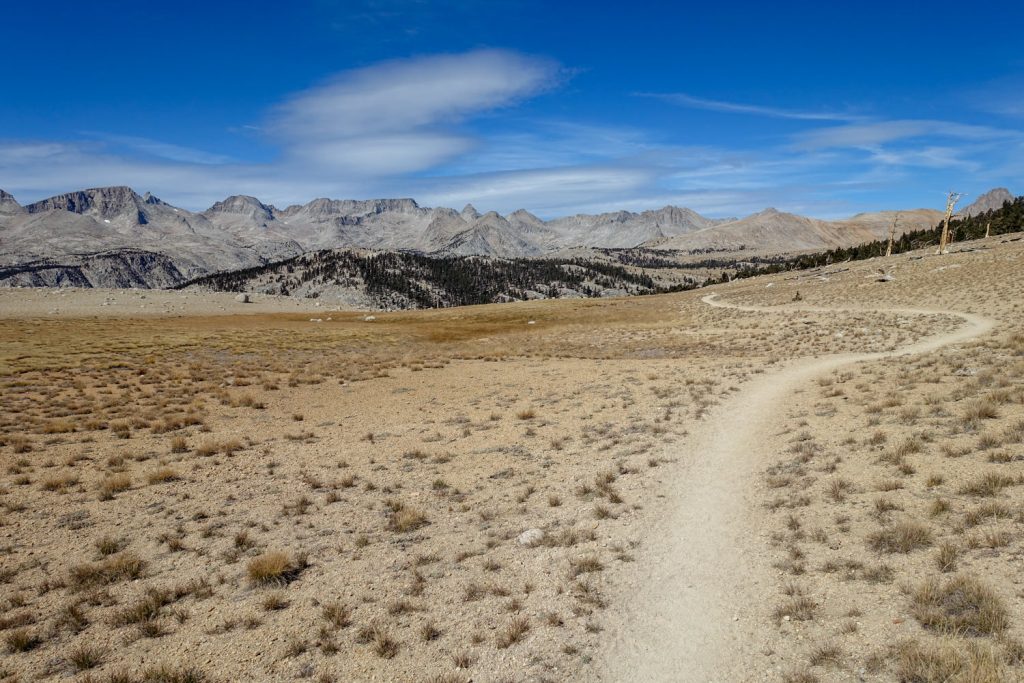
Stove & Pot
If you prize speed and convenience, an integrated canister stove system, like the Jetboil MiniMo, Jetboil Flash, or MSR WindBurner are good options. But on a strenuous trip like the JMT, we chose to cut about half the weight and brought the BRS Ultralight Stove and Snow Peak Mini Solo Cookset. That option isn’t as fast, easy, or fuel efficient as a Jetboil, but it’s lighter and less bulky. You could also use a popular, durable, and trustworthy canister stove like MSR PocketRocket 2 and pair it with any ultralight pot system. For more options, check out our Best Backpacking Stoves and Best Backpacking Cookware lists.
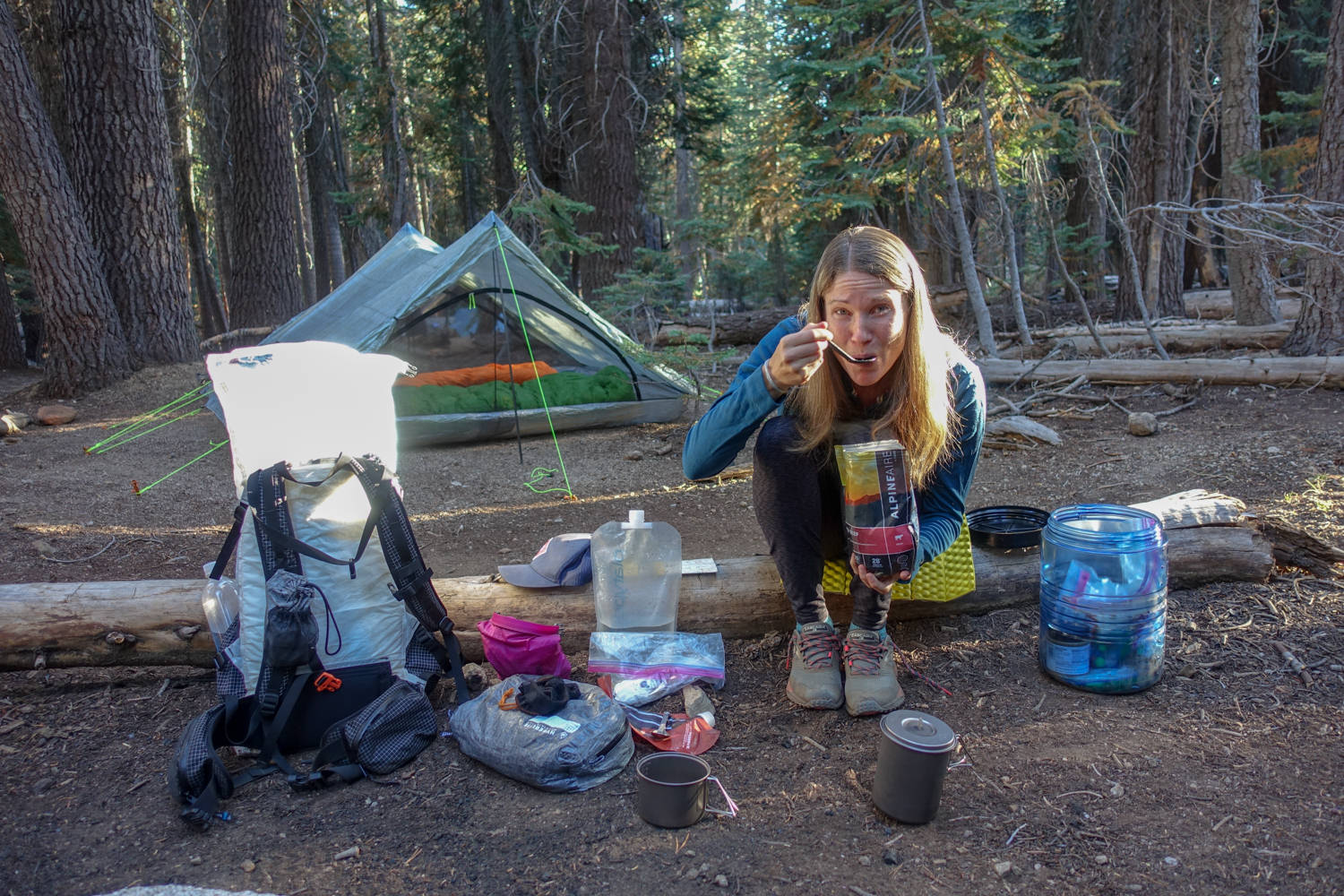
Camp Spoon & Cup
If you’re preparing your own meals or enjoy a cup of coffee in the morning, you’ll want to pack a simple lightweight cup, which can double as a bowl for meals. You’ll also want to bring a durable spoon. We like the Sea to Summit Frontier Ultralight Long Handle Spoon, which is A+ for eating out of freeze-dried meal pouches. We plan simple meals in the backcountry, so we don’t bring a fork, and if we need a knife we have our Swiss army.
Food
Hiking the JMT is hard work. You’ll need a lot of calories – 3,000-5,000 per day – to sustain you on the trial. Because you’ll be out for 2-3 weeks, you’ll need to stop and resupply at least a couple of times (more info on resupply in our Complete John Muir Trail Guide).
As you prepare your food plan, check out our Lightweight Backpacking Food Guide. Lightweight meal options such as freeze-dried meals, mashed potatoes, couscous, and other easily rehydrated foods are common on the trail. We recommend packing calorically dense foods such as energy bars, chocolate, olive oil, peanut butter, and nuts to supplement your meals. Remember, variety is key in your food plan – you don’t want to be 4 days in and hate everything you are carrying – this happens, and it’s not fun.
It’s important to not only consider weight but also bulk on your JMT hike. You’ll have to fit all of your food into a bear canister (it’s the law) so you’ll want to avoid food that is too bulky, like bagels and chips. To help with food prep, we recommend repackaging food items into Ziploc bags.
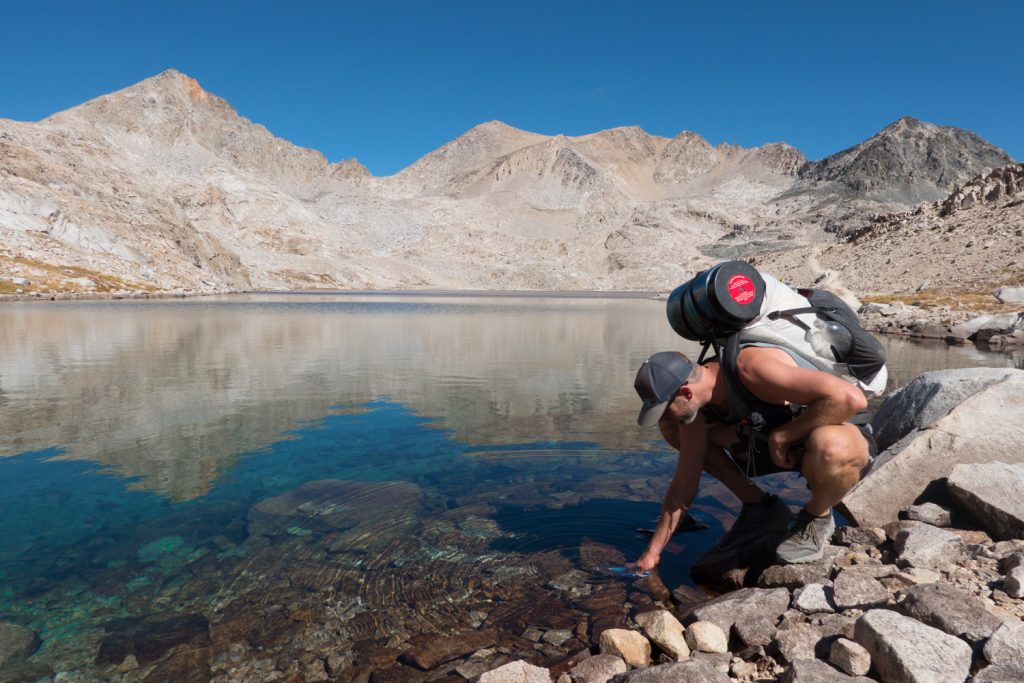
Water Filter / Purifier
Water is plentiful and easily accessible along the John Muir Trail. You’ll want to carry enough water to get from one source to the next as well as a lightweight water filter or purifier.
Most of the water sources in the Sierras are clear and free of sediment, so we chose to use a SteriPEN Ultra as our main water purification method. The SteriPEN is lightweight, works fast, and doesn’t require any pumping, squeezing, or chemicals. Its battery covers about 5 days’ worth of water for two people, but we also brought a lightweight power bank and chlorine dioxide pills just in case.
Another very popular and affordable option is the Sawyer Squeeze, which is lightweight and convenient. Whatever purification method you choose, we recommend bringing some chlorine dioxide pills as a backup for if your main filtration system malfunctions, clogs, breaks, or loses battery. Check out our Best Water Filters list for more recommendations.
Headlamp
A small headlamp like the Petzl Actik Core is a bright, and lightweight option. Make sure to test your headlamp batteries before you set out and bring a small backup light source if your smartphone doesn’t have one. Check out our Best Headlamps list for more recommendations.
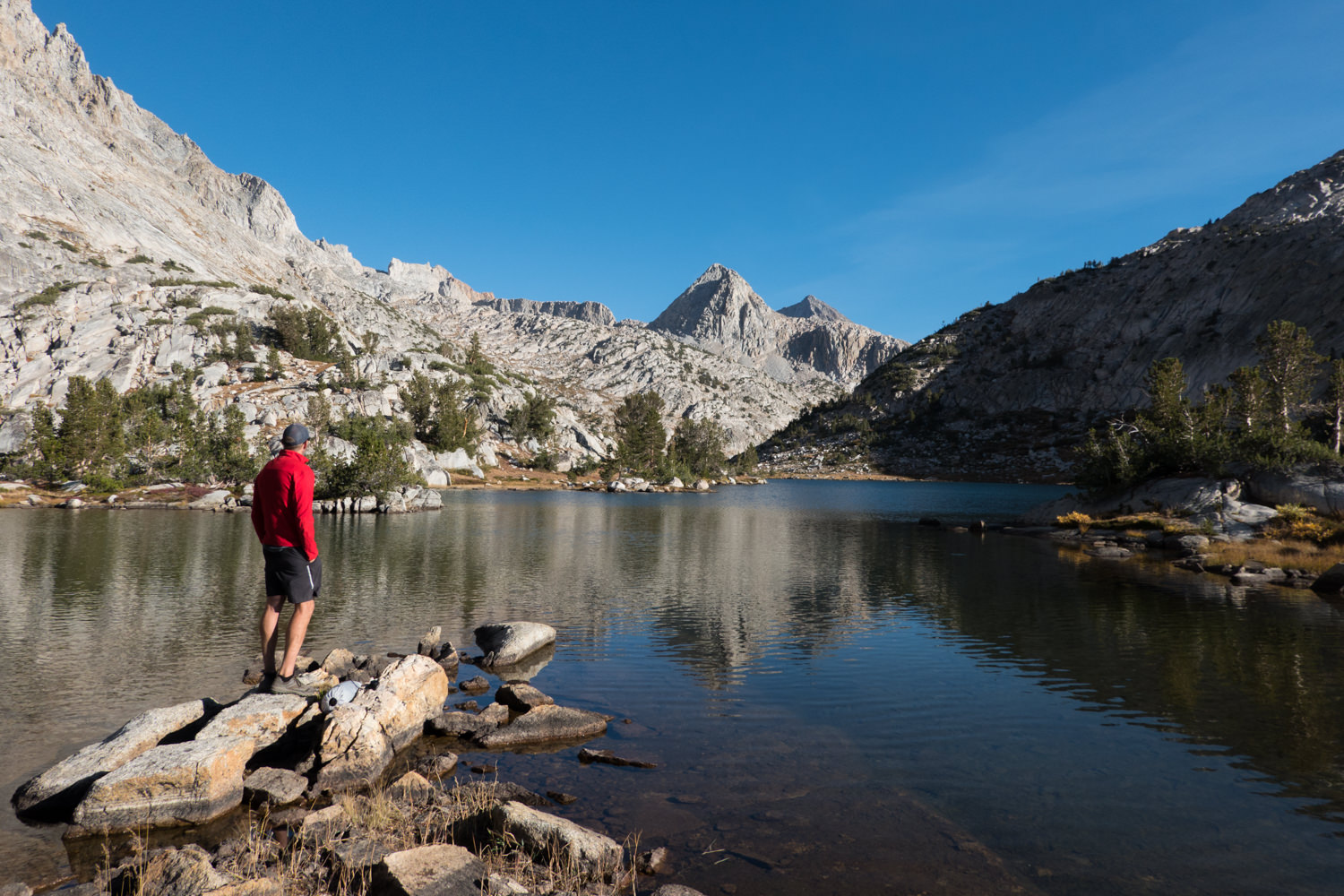
Camp Pillow
Finding the right camp pillow can make all the difference in getting a good night’s sleep. After years of wobbling around on inflatable pillows, we’ve found our favorite option is the HMG Large Stuff Sack Pillow. It’s featherlight and comfortable with a soft fleece layer against your face. We stuff our down jackets into the pillow and that makes it feel as close to our bed at home as we’ve found. Take a look at our Best Pillows list for more of our top picks.
Trekking Poles
There’s a lot of elevation gain and loss on the JMT, so many hikers find trekking poles helpful in reducing strain on their knees during long ascents and descents. They are also key for water crossings in the spring time. And if you’re using an ultralight shelter, trekking poles can often double as tent poles, which saves quite a bit of weight. Head over to our Pros and Cons of Hiking with Trekking Poles post to learn more, and then check out our Best Trekking Poles list for our trail-tested recommendations.
Map & Compass
National Geographic offers an excellent John Muir Trail Topographic Map Guide, which is a 48-page pamphlet style set of maps. They’re waterproof, compact, and provide important information on mileage, water sources, resupply locations, campsites, and much more. We used it every day on the trail and thought it was an excellent resource. Another option is the John Muir Trail Pocket Hiking Atlas, which is a great on-trail resource. In addition to topo maps, we always hike with a compass just in case. And if you know the concept but maybe wouldn’t feel 100% having to actually use it on trail, we’ve got you covered with a quick video tutorial on how to use a map and compass.
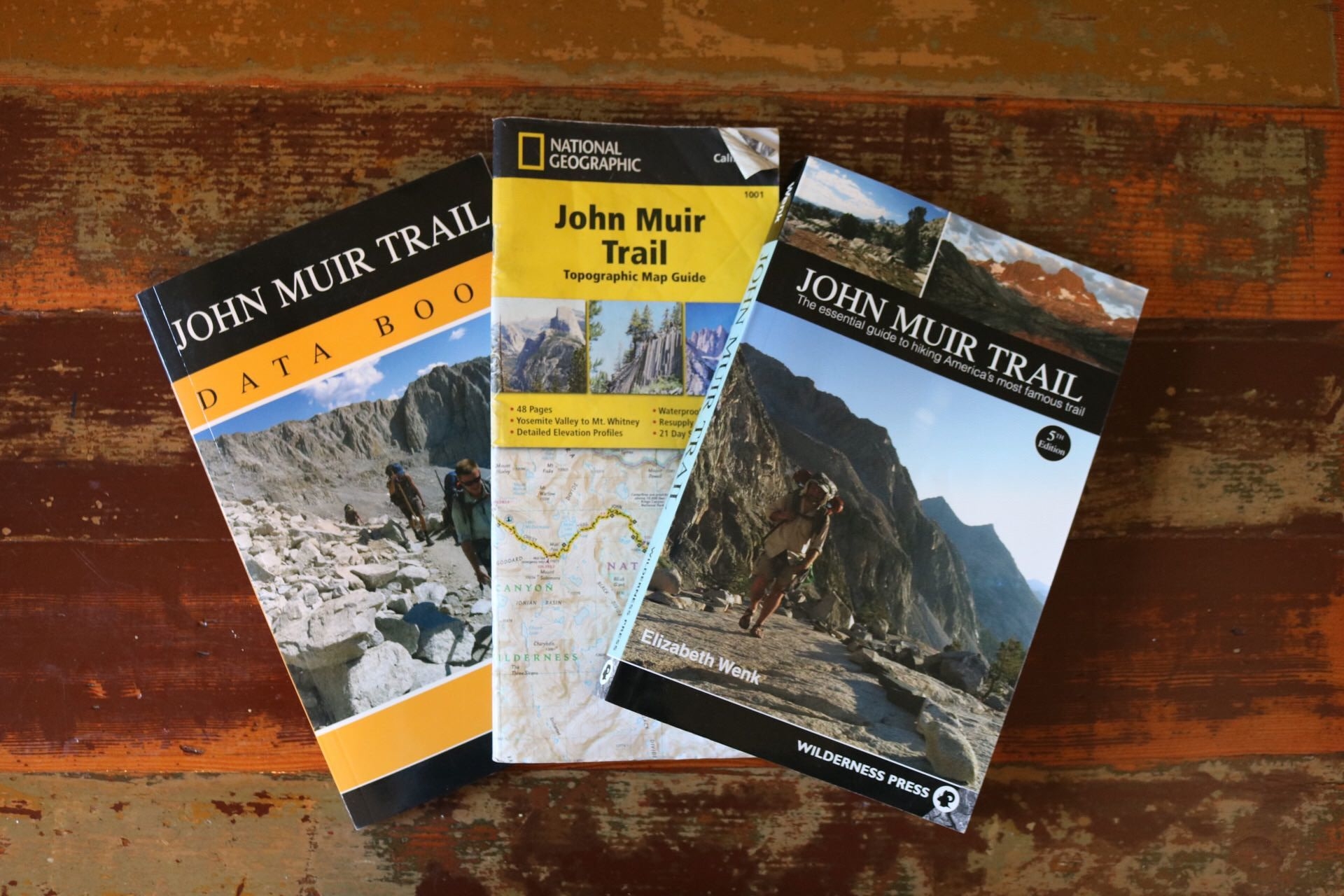
Guidebook
Before you step foot on the JMT, you’ll most likely have spent many hours planning and preparing for your hike. Throughout this process, you’ll find there are hundreds of resources on the topic. We found that the John Muir Trail: The Essential Guide to Hiking America’s Most Famous Trail and the accompanying John Muir Trail Data Book were instrumental in helping us prepare and plan. Although we decided to leave the data book behind, we still used it extensively for phase.
GPS & Phone Apps
We’ll be honest, this is the navigational tool we use the most by far. Almost every hiker you run into on the John Muir Trail will have the FarOut JMT App downloaded on their phone. It’s a great GPS resource that’s user-updated to give on-trail information regarding water sources, campsites, and other helpful tips. Be aware that it occasionally has campsites listed that do not follow National Park or LNT guidelines. Always ensure your campsite follows Leave No Trace guidelines to minimize impact.
Camera
You’ll be hiking across some of the most beautiful terrain in the United States. If you are at all inclined to take high-quality photographs, this is the trail to do it. We absolutely love our Sony RX100 VI for trips like the JMT. This camera is widely considered the best point-and-shoot camera available. It’s got a huge sensor for a camera its size and excellent zoom. If zoom isn’t super important to you and you’re looking to cut the cost significantly, the Sony RX100 III is also a great option.

Small Towel
A bandana and the PackTowl Luxe are great for cleaning up after a day on the trail. Proper hygiene will not only keep your tent mate happy, but you’ll feel far better and more refreshed as well. Remember, never wash directly in water sources. That’s harmful to wildlife and the ecosystem. Instead, walk 200 feet away and take a 1-2 liter water bottle shower using your bandana as a washcloth. We do this every day after hiking and it feels great.
Toilet Paper, Trowel & WAG Bags
You’ll need to pack in and pack out all of your toilet paper on the JMT. We recommend storing it in a small Ziploc bag to make sure it stays dry and well-sealed. Always use a trowel and dig a proper cat hole at least 6-8 inches deep. Remember to find a place 200 feet from water sources.
There’s also a section of trail in the Whitney Zone where you’ll need to do your duty in a WAG bag and carry it out. It’s actually not as gross as it sounds – there’s a deodorizer in the bag which neutralizes the smell. If you’re picking up your permit in Yosemite, they may give you a wag bag kit to carry with you on your hike. You’ll understand why this is so necessary when you see how many people visit the Whitney Zone every day. Solid human waste takes a long time to decompose at high altitude and nobody wants a minefield of cat holes. Check out our How to Poop in the Woods post for more tips.
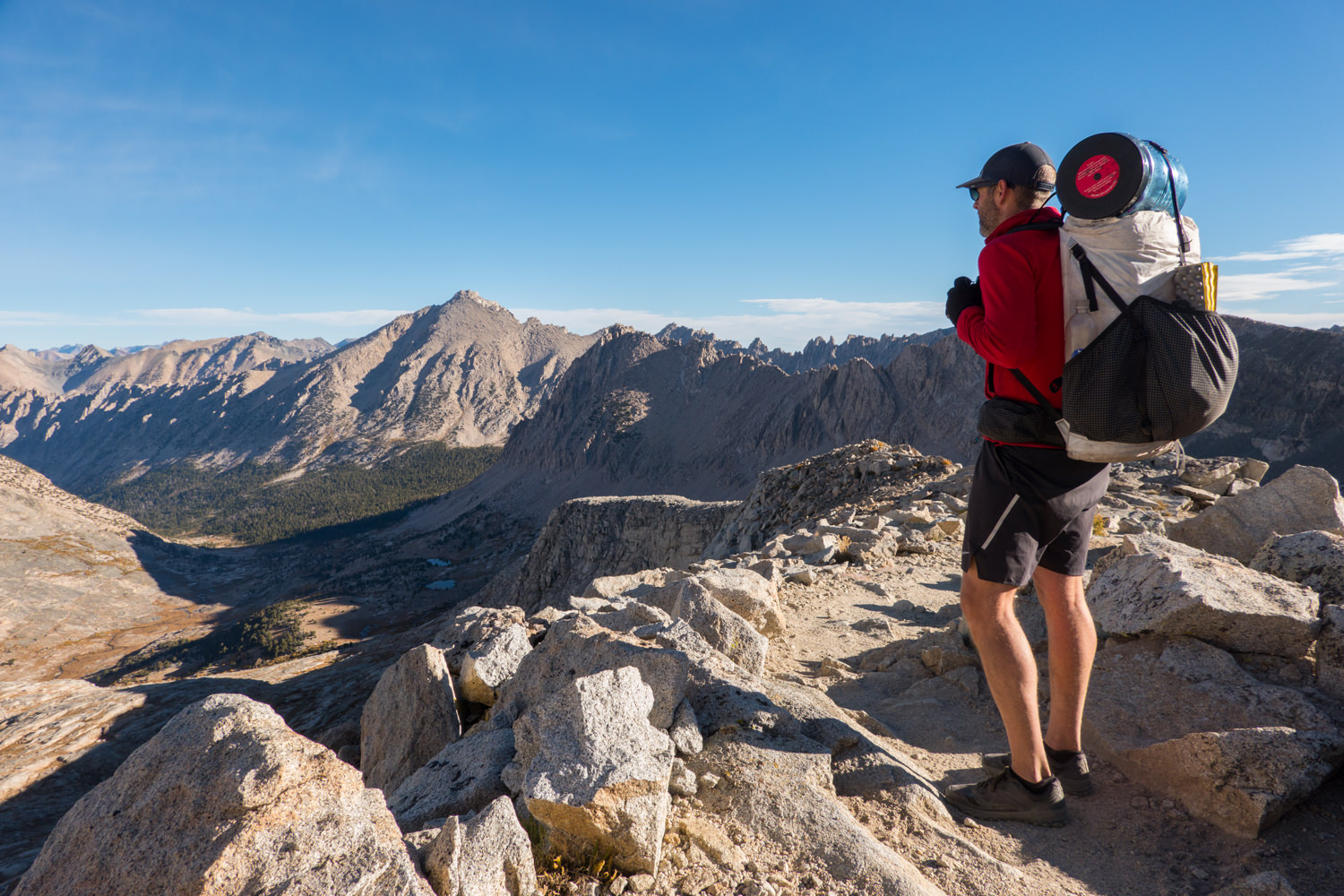
Bear Canister
All JMT hikers must carry and store all their food and scented items (toiletries, trash, etc) in an approved bear canister for the entire route. We love the Bear Vault BV500 Food Container and it was a great size for our resupplies. At night, simply place your locked bear canister about 100 feet away from your campsite. Just make sure to avoid placing it near rivers, lakes, or cliffs in case an animal does knock into it in the night.
Though most people store bear canisters inside their backpacks while hiking, we found it convenient and comfortable to strap them to the top of our packs. Just be careful with any food you don’t want to melt in the sun.
Hand Sanitizer
We always hike with a small container of hand sanitizer in our hipbelt pockets. We use it before snacks and meals, as well as after going to the bathroom.
Insect Repellant
Depending on the time of year, mosquitos can be ferocious on the JMT. July and August are typically the worst months for bugs and the worst locations are typically Tuolumne Meadows to Edison Lake, and the Rush Creek drainage. If you’re going to be hiking the JMT during the spring or summer, we recommend being as prepared as possible. Spray your clothing with permethrin prior to your hike and carry a small container of Picardin Lotion (our choice) or DEET to protect yourself.
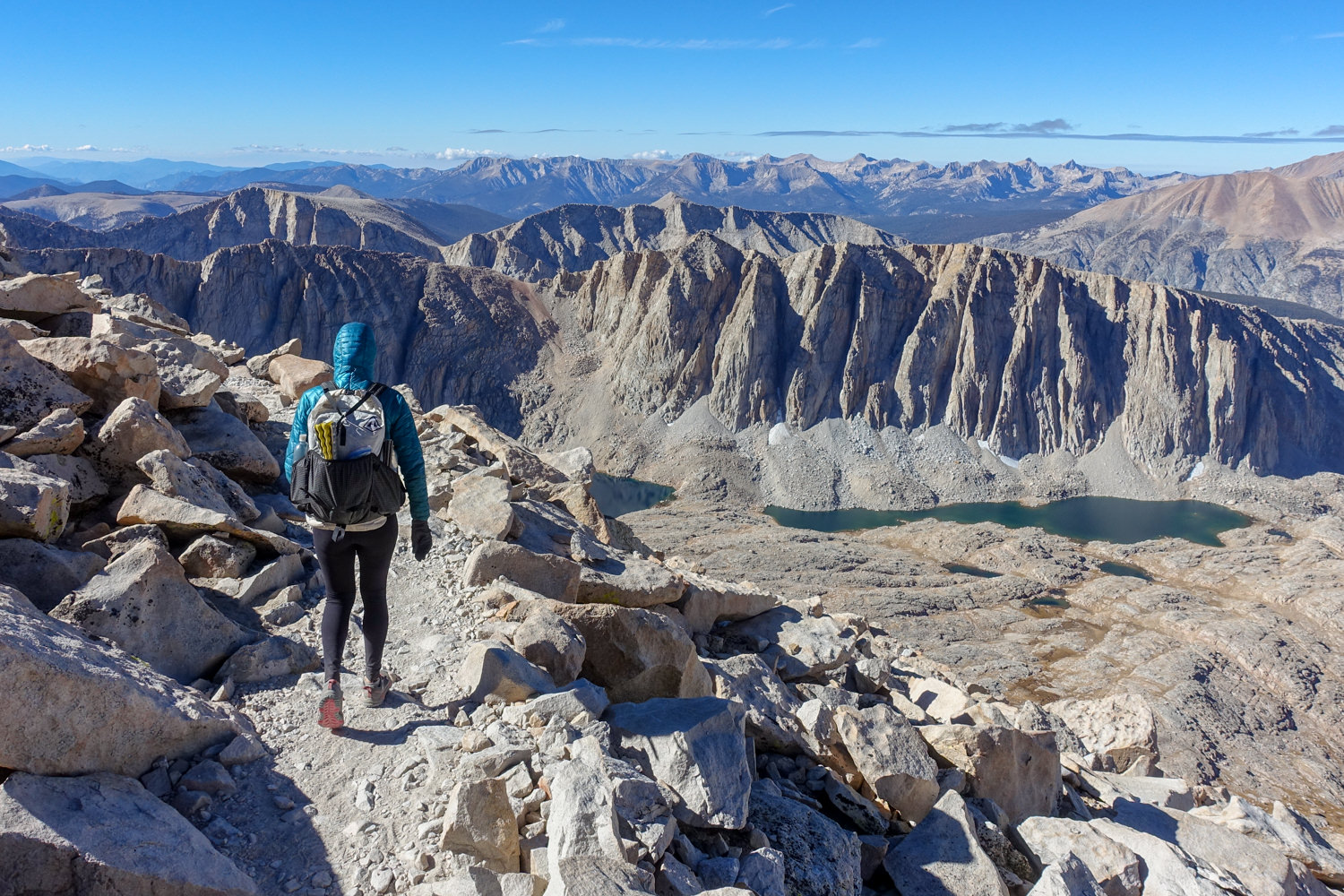
Power Bank
If we’re going on a backpacking trip for more than a couple days, we usually carry a small, lightweight power bank. Items such as your phone, camera, or headlamp may all run out of battery, so it’s good to have a backup. We like the Iniu 20000 PD and it has come in handy quite a few times.
First Aid Kit
A small personalized first aid kit is essential for all backcountry trips. We use the Ultralight .7 Kit and add extras, like painkillers and personal medications. Adding extra bandaids to your kit is also a good idea for a trip like the JMT.
Sun Protection
Sun protection is an absolute must for every backpacking trip. Even on cloudy days you’ll want to wear sunglasses (Goodr OGs are our faves), sunscreen, and SPF lip balm.
Gear Repair Tape
Tenacious Tape is a fantastic tool that should go with you on every backpacking trip. It can quickly fix a popped sleeping pad, a tear in your tent, or seal up ember burns in your puffy coat. We also bring a small roll of duct tape (wrapped around a pencil, lighter, or water bottle) for quick gear repairs or heavy-duty blister protection.
Pocket Knife
We brought along a small Swiss Army Knife which comes in handy from time to time. Some hikers consider tools like this optional, but we think it’s always good to have a small knife and a few tools (tweezers, toothpick, can opener, etc). Check out our lists of the Best Pocket Knives and Best Multitools for more of our top picks.
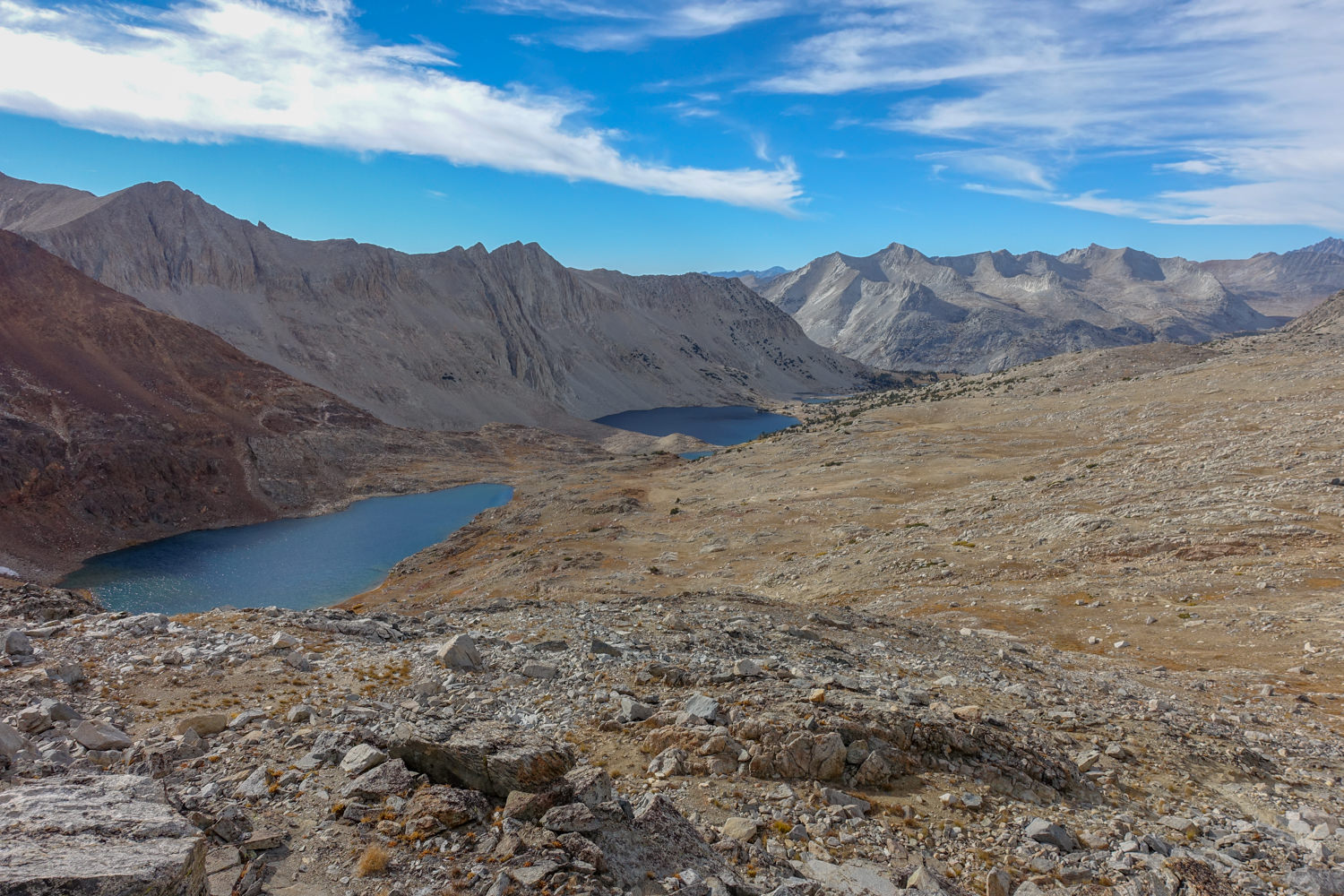
Backpack Water Protection
Sleeping in a wet sleeping bag is the pits. So always waterproof the important gear inside your backpack on rainy days. We bring a large garbage bag or two in case the weather turns foul and we need to line the inside of our backpacks. We also like using lightweight waterproof stuff sacks for organization, which makes waterproofing easy. Our favorites are HMG Waterproof Stuff Sacks and Sea to Summit Ultra Sil dry bags.
Permits
You’ve scored a JMT permit – congrats! That’s no easy feat. Now make sure you have that bad boy on you and in an easily accessible location. You might need to show it to multiple park rangers along the way.
Toiletries
Don’t forget things like a travel toothbrush, toothpaste, contact lenses, personal medications, and any other small toiletries you may need.
Games, Books & Journal
Although you’ll most likely be exhausted after long days of hiking, we always found it great to have some lightweight entertainment with us. We wrote in our Rite in the Rain All-Weather Journals almost every night. There were a few people with Kindles on the trail as well.
